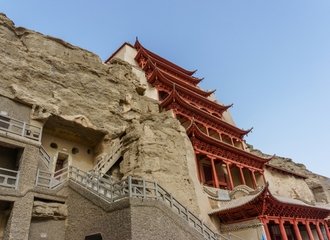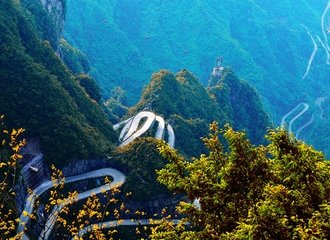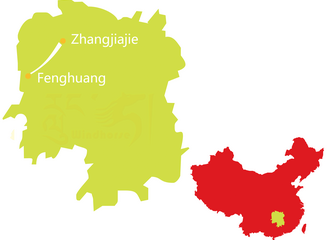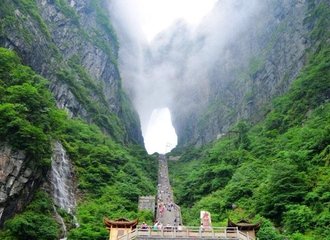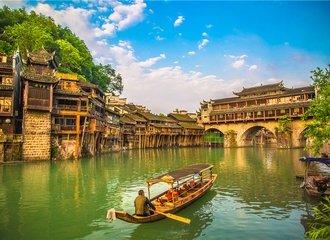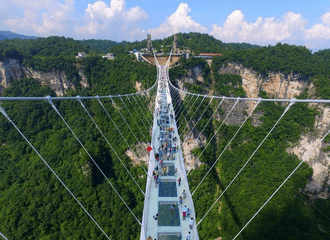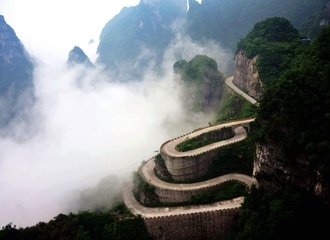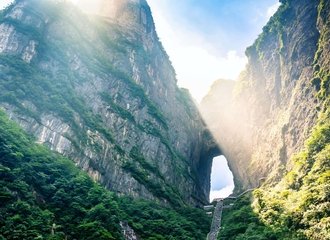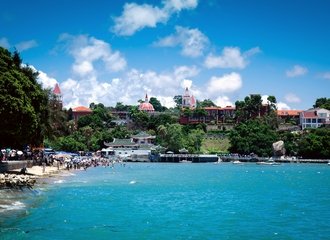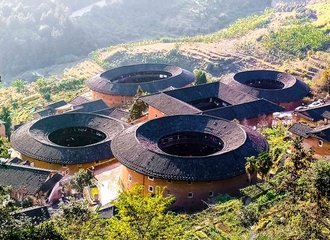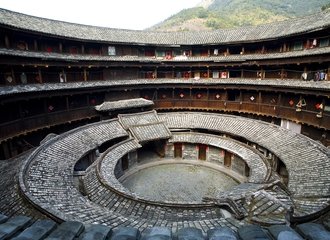Zhujiajiao - The Best Ancient Town in Shanghai

Would you like to know the ancient towns in Shanghai with traditional cultures? If yes, Zhujiajiao is the first destination that you should choose when you travel to Shanghai.
Zhujiajiao is a water town on the outskirts of Shanghai. Today 36 stone bridges and numerous rivers line there and many ancient buildings still line on the riverbanks. With a history of more than 1,700 years, Shanghai protects the ancient towns together and the heart to protect the ancient towns in Shanghai will never wither or fall.
There are several ancient towns in Shanghai: Zhujiajiao, Qibao Ancient Town, and Fengjing Ancient Town.
Each of them has their own view of attraction. Zhujiajiao is the best-preserved among the ancient towns in Shanghai. These ancient towns in Shanghai are far from the modern sites of the city seen today. You can still find houses full of people in the courtyards and leisurely in their daily life. The view of the stream flowing under the old bridges with the shadow of the willow tree gives you a beautiful picture of tranquility.
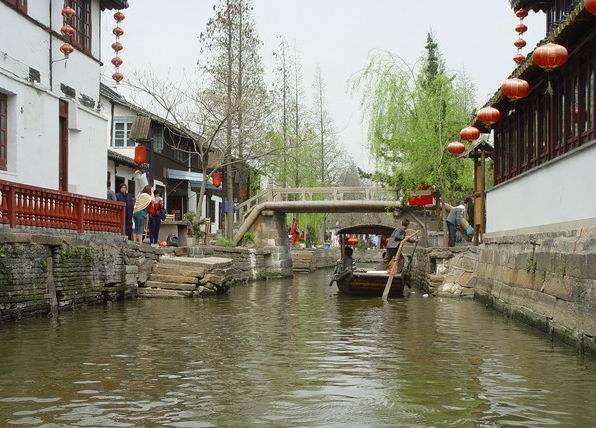
About Zhujiajiao
The History of Zhujiajiao
Zhujiajiao has a long history that started way back during the Warring States period as a little village. It really began to grow during the Ming and Qing Dynasties, from 1368 to 1912. Thanks to its good spot near Dianshan Lake, it turned into a busy place for buying, selling, and trading. The town's many waterways were super important for moving goods around and for watering crops, which helped the area's farms do well. As time went on, Zhujiajiao got bigger, and its buildings and the way the town was laid out changed to show how the society and economy were growing. Today, you can still see old-style shops, bridges, and buildings by the water that remind us of its rich history.
A few big events really made Zhujiajiao what it is today. For example, during the Ming Dynasty, they built the Fangsheng Bridge, the biggest stone arch bridge in Shanghai, decorated with dragon designs. This showed off the town's great architecture and culture. Also, in the Qing Dynasty, Zhujiajiao became an important spot for distributing goods in the region, making it a key player in the local economy.
Over the years, Zhujiajiao played important roles in history, like during wars and as part of the big canal system. These events didn't just change how the town looked; they also added to its culture, making it a place full of history and tradition. Now, Zhujiajiao is like a living museum, giving us a peek into China's fascinating history and culture.

Exploring Zhujiajiao
As mentioned previously, Zhujiajiao is a typical water village. So boating is a good way to experience how people used to move around in the old days. It is a kind of unique thing to boat here.
Here's a guide to help you explore its captivating features, from serene waterways and historic bridges to traditional architecture.
The Waterways
The heart of Zhujiajiao lies in its intricate canal system, which has served as the town's lifeline for centuries. These waterways, crisscrossing the town, were once bustling trade routes and are now a picturesque backdrop for visitors. They offer a tranquil escape from the hustle and bustle of city life, with traditional wooden boats gliding gently over the water.
How to Explore by Boat
Exploring Zhujiajiao by boat is a must. Visitors can hire wooden boats for a leisurely row through the canals. Two kinds of boat rides are available in Zhujiajiao: canal gondolas and lake trips. You can choose the way you want. For the canal gondolas which includes short distance (60 RMB per boat) and long distance (120 RMB per boat), each gondola can seat 6 people.
For the lake trip, the tickets for these trips are charged per person, and will usually cost you between 40 - 60 RMB for a trip lasting either 30 minutes or an hour.
Ancient Bridges
Zhujiajiao is home to numerous ancient bridges, each with its own story. The Fangsheng Bridge, meaning "Setting Fish Free," is the largest and most famous. Built-in 1571, it carries legends of mercy and kindness, where releasing fish into the water symbolizes good deeds. Another notable bridge is the Lang Bridge, also known as the "Rainbow Bridge," admired for its unique shape and picturesque setting.
To capture the essence of Zhujiajiao's bridges, aim for early morning or late afternoon when the light is soft and shadows add depth to your photos. Try different angles, such as capturing the reflection of the bridge in the water or framing the bridge with local flora. Don't forget to explore both close-up details and wider shots that encompass the surrounding landscape.

Traditional Architecture of Zhujiajiao
Zhujiajiao's architecture is a showcase of traditional Chinese styles, featuring tiled roofs that curve upwards at the edges, ornate wooden carvings, and stone pathways. The buildings often have white walls, contrasting with dark wooden beams, embodying the elegance and simplicity of ancient Chinese design.
Key historic buildings in Zhujiajiao include the Yuanjin Buddhist Temple, offering a peaceful retreat with its ancient relics and serene gardens. Another significant site is the Kezhi Garden, with its classic Qing Dynasty design, combining elaborate pavilions, ponds, and rockeries. These buildings not only serve as beautiful examples of traditional architecture but also tell tales of the town's spiritual and cultural heritage.
Exploring Zhujiajiao offers an immersive journey into a past where history, culture, and natural beauty intertwine, providing a memorable experience for all who visit.
Another thing to do here is walk along the ancient streets. There are quite a few specific sights. The main thoroughfare in Zhujiajiao is lined with old buildings. Some are many hundred years old, it makes for a nice stroll from the Fansheng Bridge in the northeast to the Handicraft Exhibition Hall and the Tongtianhe Pharmacy in the southwest.
You also can spend your time in Cafes and Teahouses when you are walking along the streets. The Book Room and Time of China are the recommended places for you. Book Room is a Cafe with about 30,000 Chinese books and more than 7,000 DVDs. It is just like a mini library. They also provide organic drinks and homemade food, it is an amazing place.

Cultural Highlights of Zhujiajiao
Zhujiajiao, with its rich cultural tapestry, offers visitors a chance to immerse themselves in traditional Chinese life. From unique crafts and delicious cuisine to vibrant festivals, here’s what makes this ancient town a cultural treasure.
Local Crafts and Trades
Zhujiajiao is a hub for artisans practicing age-old crafts. Visitors can watch or even participate in workshops for silk weaving, lantern making, and the crafting of traditional Chinese zodiac figures. These activities provide a hands-on experience of China's rich artisanal heritage.
The best places to purchase local handicrafts are the markets and small shops lining the waterways. North Street is particularly famous for its array of shops selling handmade goods, offering everything from intricate silver jewelry to hand-painted ceramics and calligraphy works.
The Food Scene
Zhujiajiao’s cuisine is a delight for food lovers, featuring fresh, local ingredients. Must-try dishes include zongzi (rice dumplings wrapped in bamboo leaves), fresh river shrimp, and the savory "beggar's chicken" — a chicken cooked in clay. Each dish tells a story of the region's culinary traditions and local flavors.
For an authentic dining experience, explore the town’s street food stalls and riverside eateries. Xiangzhang Garden offers traditional dishes in a historic setting, while the street food market near Fangsheng Bridge is perfect for sampling a variety of snacks like roasted sweet potatoes and spicy tofu.
Festivals and Events
Zhujiajiao hosts several festivals throughout the year that highlight its cultural heritage. The Dragon Boat Festival, with its exciting boat races and traditional foods, celebrates Chinese patriotism. The Mid-Autumn Festival is marked by lantern displays and mooncake tasting, symbolizing reunion and harmony.
To fully enjoy these festivals, plan your visit around the event dates and book accommodations early, as the town can get crowded. Participating in local traditions and tasting festive foods can enhance your experience. Don’t hesitate to engage with locals — they’re often happy to share the stories behind their celebrations.
Experiencing the cultural highlights of Zhujiajiao provides a deeper understanding of the traditions that have shaped this enchanting water town, offering visitors not just sights and tastes, but memories to cherish.

Tips for Visiting Zhujiajiao
Planning a trip to Zhujiajiao, the charming ancient water town near Shanghai, can be a delightful experience with the right tips in hand. Here’s what travelers should know to make the most of their visit.
Best Time to Visit
The best times to visit Zhujiajiao are spring (March to May) and autumn (September to November) when the weather is mild and pleasant. Summers can be hot and humid, while winters are cold and damp.
Peak vs. Off-Peak Times
Weekdays are generally less crowded than weekends. To avoid the peak tourist seasons, plan your visit in the shoulder seasons of spring and autumn.
Getting There
Transportation Options from Shanghai City Center
You should know the location of the Zhujiajiao when you travel to Shanghai. It is a township in the Qingpu District of Shanghai.
You can get both to and from Zhujiajiao by taxi. It will cost you 150 - 200 RMB. It is much more expensive than bus. Taking a bus from the bus station at the Puanlu bus station near People's Square or the bus station at Shanghai Ti Yu Guan Station is the most affordable way to travel to Zhujiajiao.
This should take around 1 hour and the fare is about 12 RMB. If you think both of the bus and taxi are difficult to find, your China travel agency WindhorseTour can arrange transportation for you directly to Zhujiajiao. Look at Shanghai City Highlight & Outskirts to get more information.
Tips for Navigating Local Transport
Familiarize yourself with the bus and subway schedules to avoid waiting times. Using a transportation app can help you navigate the local transport system efficiently. Carrying small change is useful for bus fares if you're not using a transport card.
As you can see the water town Zhujiajiao is the best ancient town in Shanghai with amazing testimonials of history and traditional Chinese culture. Nestled on the outskirts of the bustling city of Shanghai, Zhujiajiao stands as a serene escape, where history flows as smoothly as the waters beneath its storied bridges. With its well-preserved architecture, bustling markets, and tranquil canals, this town offers a unique blend of tranquility and vibrancy.
For those seeking to explore the rich tapestry of Shanghai's ancient towns, Zhujiajiao should undoubtedly top your list. Its unique charm lies not only in its picturesque scenery but also in the warmth of its people, the depth of its culture, and the flavors of its cuisine. Whether you're gliding through its waterways, wandering across its ancient bridges, or indulging in the local food scene, Zhujiajiao offers an immersive experience that's hard to find elsewhere.
So, as you plan your next adventure to Shanghai, remember to carve out a day or two for Zhujiajiao. This isn't just a visit to an ancient town; it's an opportunity to connect with a lifestyle that has thrived for over a millennium. With the practical tips provided, you're well-equipped to explore this cultural jewel. Embrace the journey, and let the timeless allure of Zhujiajiao enchant you.

